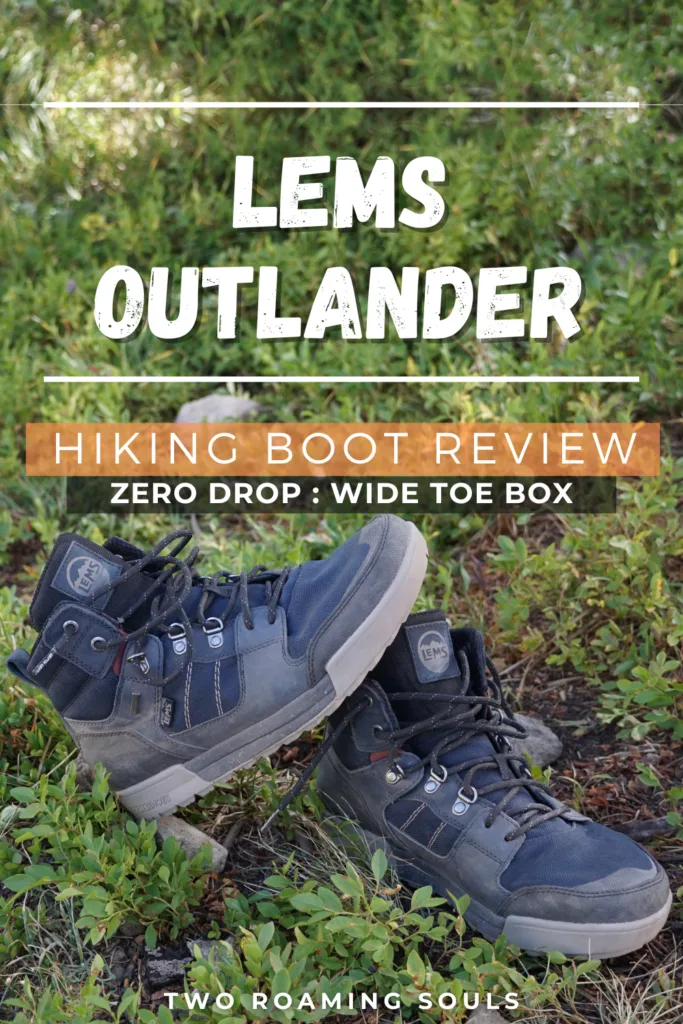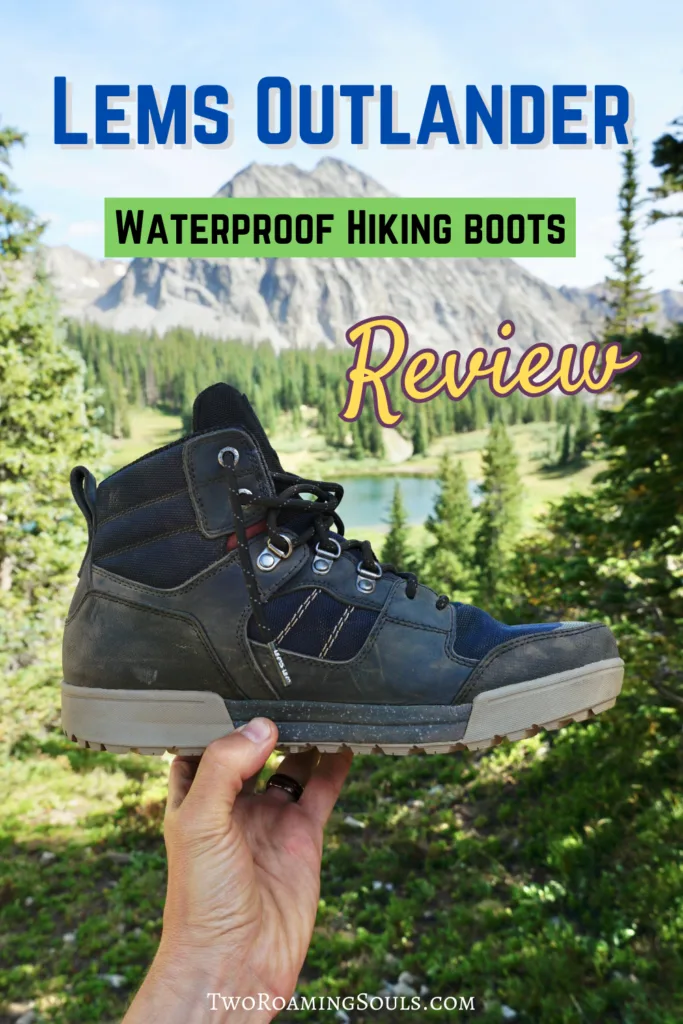For the past several months I have been using the Lems Outlander Waterproof Boot. This hiking boot is the most rugged, hiking-oriented boot in the Lems lineup.
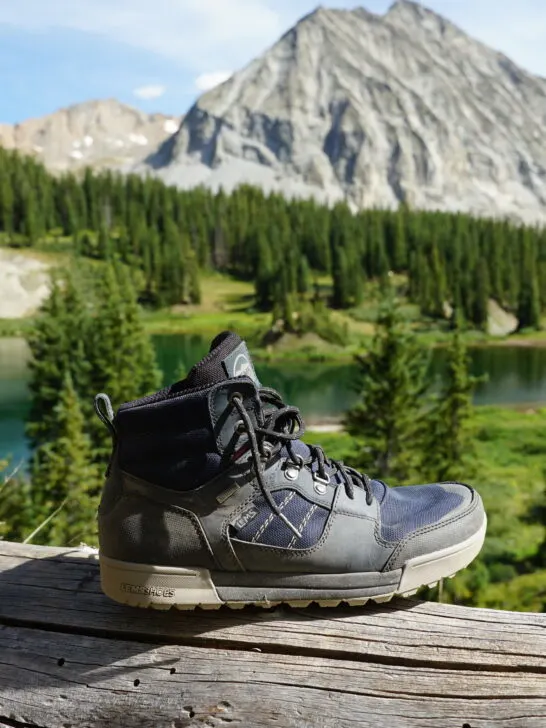
After putting many miles on this boot, I present my detailed Lems Outlander Review.
I purchased these boots with my own money. This review is in no way sponsored by Lems.
However, this post includes an affiliate link to purchase these boots. A purchase provides a small commission to us, at no additional cost to you.
A Quick Note About Lems
Lems is a company that fits in the ‘anatomically correct’ footwear niche.
That is, footwear that attempts to more closely mimic the natural shape of a human foot, and typically features minimal padding.
Other companies in this niche are Altra, Xero Shoes, Vivo Barefoot, and Keen. Along with Lems, I’ve been a fan of brands like these for years.
I much prefer a more minimalist shoe with design features like a wide toe box, zero-drop, and thin soles.

But just be aware that this type of footwear may be shockingly different if you are used to more mainstream shoe design. There may be some adjustment period if your body has adapted to the design of mainstream footwear.
But this change may be exactly what your feet have always been searching for. I transitioned to these types of footwear 7-8 years ago and never looked back.
Lems Outlander Specs:
- Last: Lems WIDE Natural-Shape™ Last
- Upper: Nylon and leather
- Lining: Polyester with waterproof membrane
- Outsole: Winter traction outsole with 4mm lugs and zig-zag siping
- Insole: 4.5mm insole
- Stack Height: 16.0mm (not including 4.5mm insole)
- Drop: Zero-Drop
- Weight: 14.7 oz (Men’s 10)
First Impressions: Lems Outlander Hiking Boot
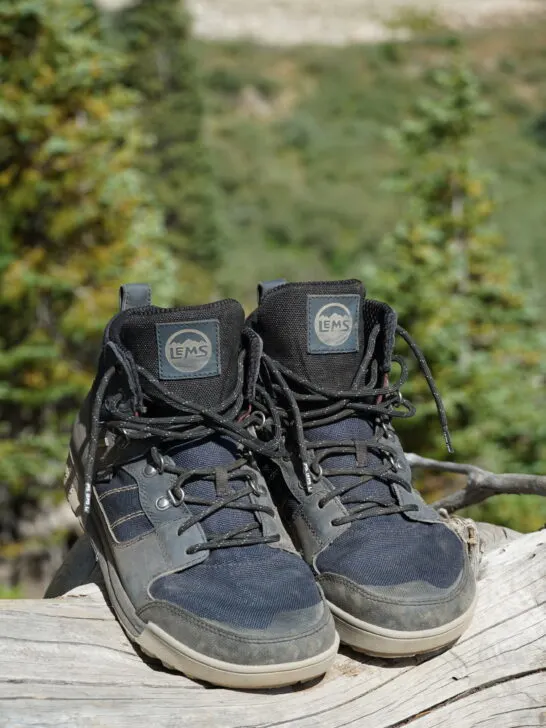
My first impression of this boot is that it’s much more rigid than anything else in Lems’ lineup. I also own their “flagship” model the Lems Boulder Boot. But I treat those more like everyday ‘around town’ shoes and don’t regard them as substantial enough for long hikes on rough terrain.
I was looking for a hiking boot replacement for my Altra Lone Peak 4 RSM. (Recent changes and negative reviews of newer Lone Peak models prompted me to look elsewhere.)
The Lems Outlander feels much more rigid and substantial than my old Altra Lone Peaks. It feels closer to wearing a traditional hiking boot rather than a minimalist trail runner.
And the trade-offs of this are usually easy to predict. (More durability and foot protection, but longer ‘break in’ period and higher potential for blisters).
Fit and Comfort
My normal shoe size measures to a men’s 9.5, and I purchased the Lems Outlander men’s size 9.5.
I wear thin to medium-weight hiking socks, and I would confirm that Lem’s Outlander fits true to size.
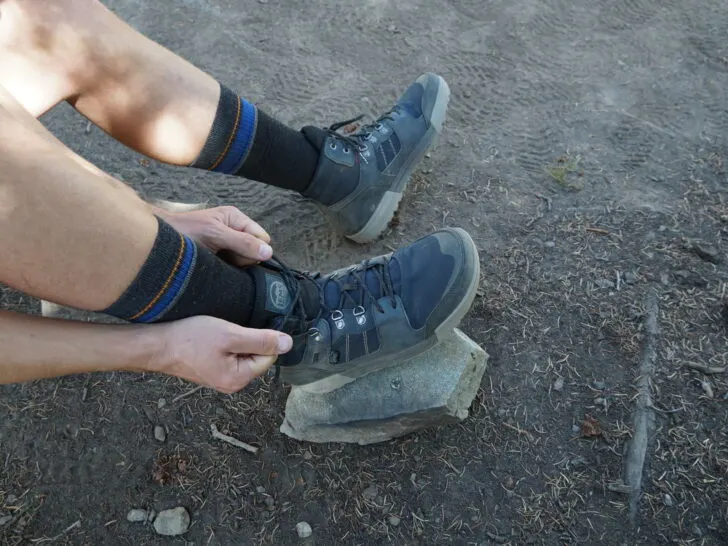
As expected, the Lems Outlander required a little bit of a ‘break-in’ period for me. The first time I wore them, I started developing heel blisters after only a few miles.
But on subsequent hikes, that issue has gone away. I now find them quite comfortable.
The toe box is advertised as ‘Wide’. Among the Lems Lineup, they also have ‘Medium’ and ‘Widest’, as illustrated by this chart.
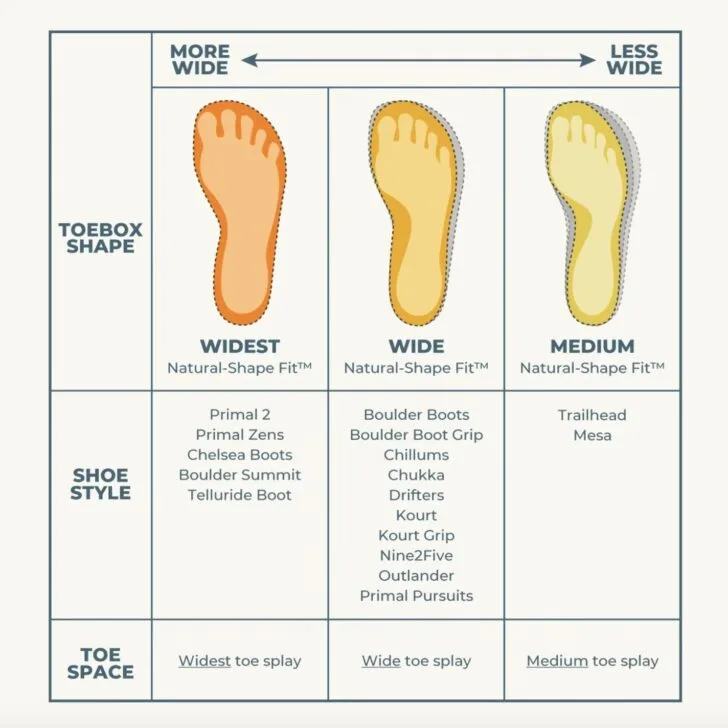
According to that, the toe box of the Outlander should feel the same as my older pair of Boulder Boots. However, I find that the Outlander feels more narrow than the Boulder Boot. It also appears that way upon simple inspection.
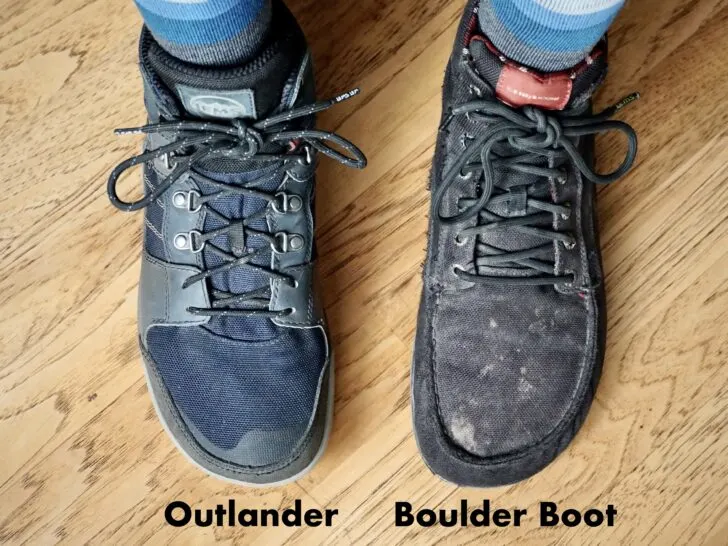
I find that my toe splay is still somewhat constricted by the toe box of the Outlander. It might just be the more rigid upper causing this. But regardless, it’s noticeable to the wearer.
However, the Outlander toe box is much wider than more mainstream shoe companies.
The ‘ground-feel’ of these boots is quite dulled. If you step on a pointy rock or root, you will notice it. But it doesn’t stab right through like many other minimalist boots or shoes.
Traction & Outsole
The outsole on the Lems Outlander has very deep 4mm lugs. This aggressive outsole is another reason the Outlander is a bit of an outlier in the Lems lineup. And it’s also the main reason I was interested in testing this boot.
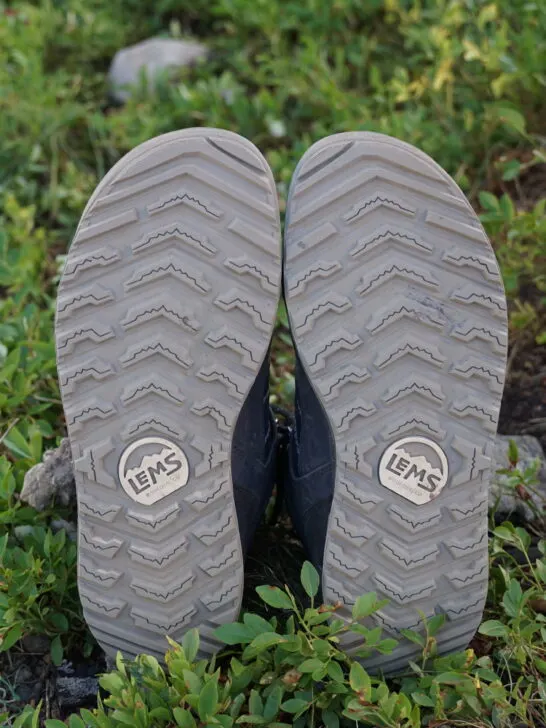
Lems also incorporated ‘siping’, a popular feature of tires. Siping is “a process of cutting thin slits across a rubber surface to improve traction in wet or icy conditions”. It seems plausible that this concept could translate well to footwear as it does with tires.
In my experience, these boots grip extremely well on anything except the most extreme conditions, like ice and deep mud.
Compared to the relatively soft outsole on Lems ‘flagship’ Boulder Boot, the Outlander soles are much more rugged.
I do enough hiking on rough terrain, that I appreciate having a boot with a more substantial outsole. With these, you can blaze over rough terrain without stressing too much about step placement.
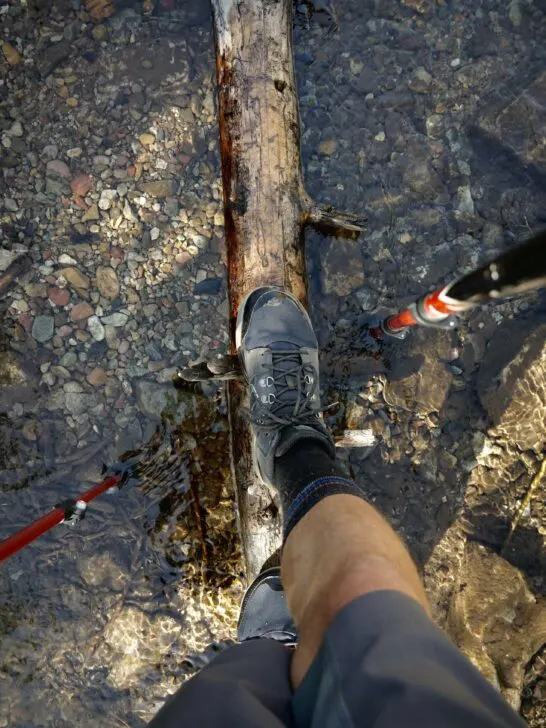
Compared to the Lems Boulder Boot, where you practically need to always watch your step.
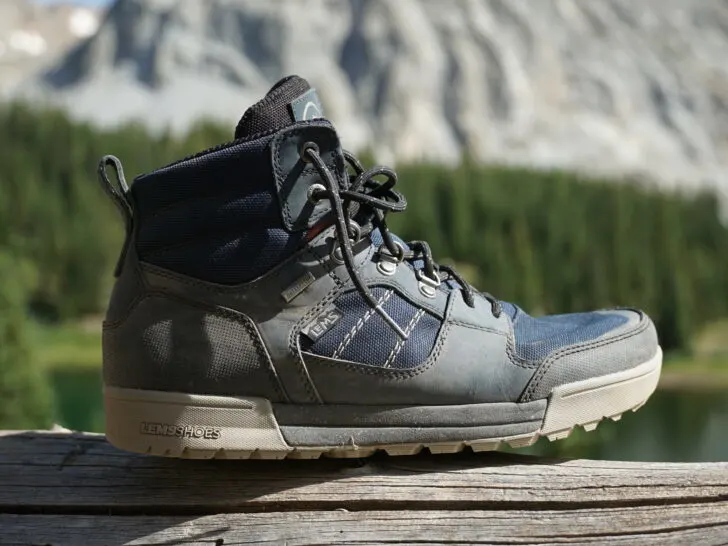
Another feature of nearly all Lems footwear is a ‘Zero-Drop’ design. Which means that the bottom of the shoe is the same thickness throughout.
The zero-drop design is centered around the idea of keeping your walking & running mechanics as close to natural as possible.
Lacing System
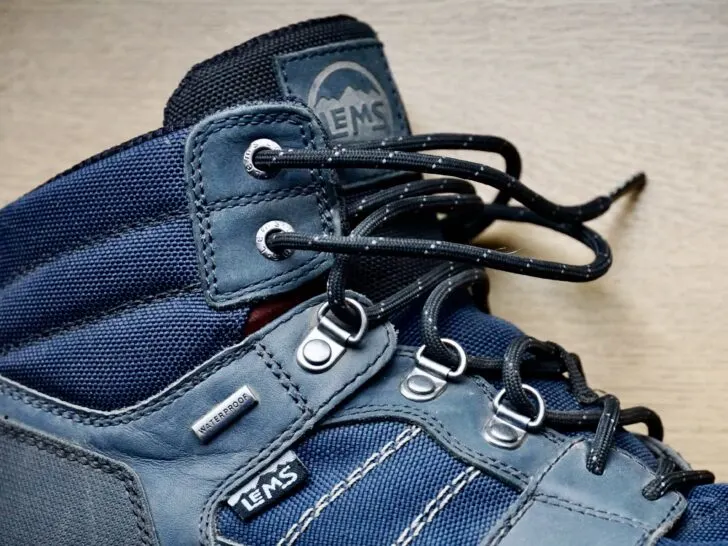
The thing I like least about these boots is the lacing system. They opted to use metal eyelets all the way up to the top. And the laces don’t have enough friction to cinch up.
Consequently, I really struggle to get these boots tied tight enough. I feel like as I work my way up the boot, the laces from the previous tug always loosen before I can cinch the next section.
It practically requires me to pin down each previous intersection as I work my way up.
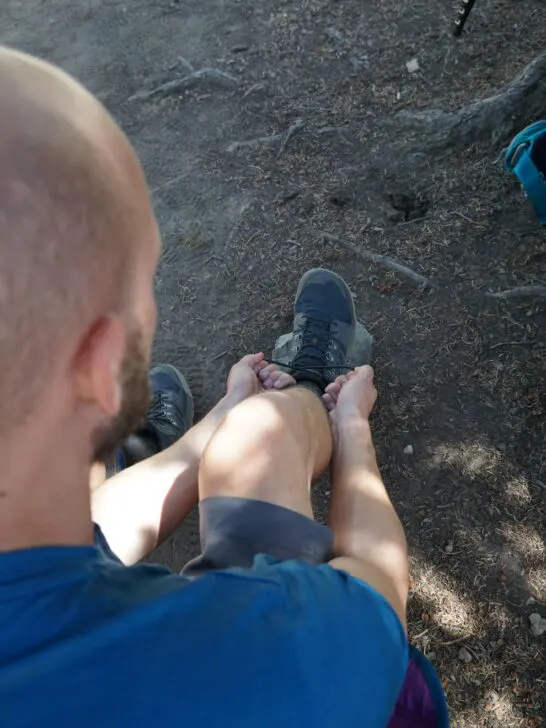
I even tried that trick where you add an overhand knot at the ankle, but it didn’t really help.
Conversely, a silver lining is that they unlace really easily.
Hiking boots always seem to have some lacing difficulties, but the design on the Lems Outlander is not the answer.
Aesthetics
I really like the way the Lems Outlander looks. It’s like a retro high-top sneaker mixed with a hiking boot.
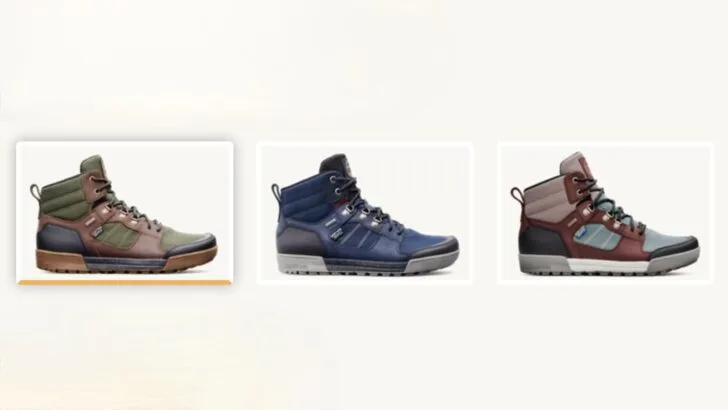
I love all the different color schemes they offer. They feel nature-inspired and not too flashy or boring.
I ultimately just bought the ‘Blue Steel’ option because it was on sale.
A common criticism of ‘wide toe box’ shoes is that they look a little bit like clown shoes.
But the narrower toe box and thicker upper of the Lems Outlander mostly avoids that stigma. If only at the expense of not having a truly wide toe box. So there is a little bit of a trade-off in that respect.
Waterproofing
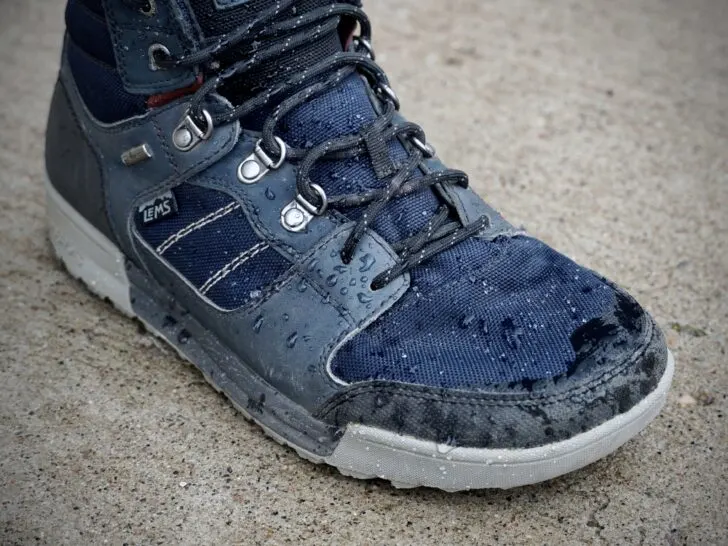
Another nice feature of the Lems Outlander is the breathable waterproof upper. I’ve tested the boots over several river crossings, and they successfully kept my feet dry.
And the gusseted tongue means that their waterproof-ness basically extends all the way up to the top of the cuff.
The upper does have some “breathable” sections. But overall, I would say that these boots run pretty warm/hot. A common trade-off for waterproof footwear.
And as with almost all waterproof footwear, the waterproofing will eventually fail if not properly maintained.
Conclusion: Lems Outlander Review
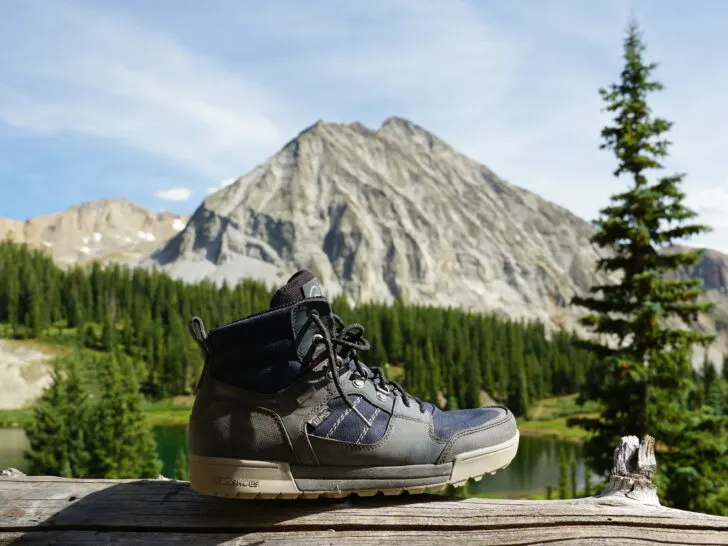
My final verdict on the Lems Outlander is that it’s a capable and stylish hiking boot. It has all the features I love in the ‘anatomically correct’ footwear niche (zero-drop, wide toe box, etc).
Check Price and Availability on Lems.com
Honestly, I wouldn’t mind the toe box being even wider, since I don’t wear hiking boots for the fashionability anyway. But still, my toes don’t feel crammed.
The waterproofing is a nice bonus that makes this boot useful year-round.
However, my only big issue with the Lems Outlander is the lacing system. It is annoying enough that personally, I wouldn’t purchase these boots again unless that issue was fixed.
Share This ‘Lems Outlander Review’ On Pinterest!
